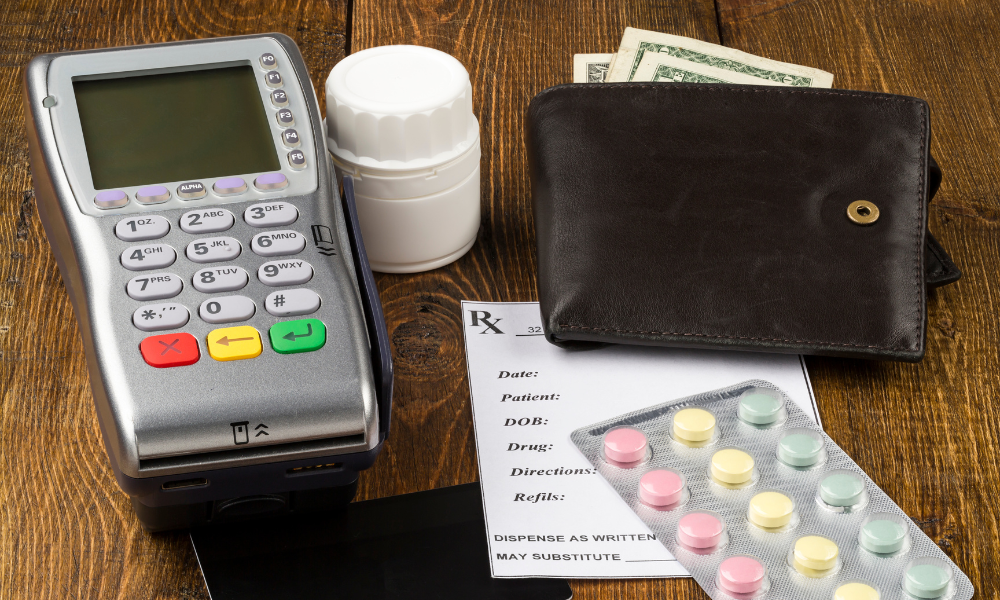Prescription drug costs increase every year and have become unaffordable for many Americans.
The United States Department of Health and Human Services monitors drug price increases and has some staggering findings from 2022:
- In January 2022, the average price increase was nearly $150 per drug (10%), and in July, it was $250 (7.8%).
- Over the year, several drugs increased their list prices by more than $20,000 or by more than 500%.
- There were 1216 products whose price increases during the twelve-month period from July 2021 to July 2022 that exceeded the inflation rate of 8.5 percent for that time period. The average price increase for these drugs was 31.6 percent.
The Inflation Reduction Act of 2022 aimed to address some of these price increases by requiring manufacturers to pay rebates, but many drugs are still unaffordable. If your prescription is not covered by the Act’s cost saving measures, there are other ways to afford your medications.
Extra Help Program
Extra Help, also known as Part D Low-Income Subsidy, is a federal program that helps pay for some to most of the out-of-pocket costs of Medicare prescription drug coverage.
If you have Medicaid, Supplemental Security Income, or a Medicare Savings Program, you should be automatically enrolled in Extra Help. If not, you may still be eligible and can apply for the Extra Help program through the Social Security Administration using either the print or online application. To apply online, visit www.ssa.gov.
State Pharmaceutical Assistance Programs
Many states offer State Pharmaceutical Assistance Programs (SPAPs) to help residents pay for prescription drugs. Oregon’s SPAP allows for a special enrollment period to make changes to your Part D or Medicare Advantage Coverage. To make these changes, you can contact Oregon’s health insurance assistance program, which is known as Senior Health Insurance Benefits Assistance (SHIBA).
The Council on Aging has volunteer SHIBA counselors who offer free, unbiased, and confidential assistance with Medicare questions. They can provide personalized insight into what programs you may be eligible for to afford your prescriptions. To set up an appointment with one of our local SHIBA counselors, call 541-678-5483 (English) or 541-325-6837 (Spanish). To receive more information on SHIBA benefits across the state, call 1-800-722-4134 or visit www.shiba.oregon.gov.
Additionally, Oregon Prescription Drug Program offers discounts through ArrayRx. All Oregon residents can enroll for free. There are no age or income limits.
Patient Assistance Programs
Patient Assistance Programs offer free or low-cost drugs directly through the company who manufactures your prescription. In most cases, your doctor must apply for you. Talk to your provider to see if you qualify.
Prescription Drug Discount Programs
You may be able to get medications at a reduced price from national or local discount programs. These programs do not allow use of Part D coverage at the same time. If your drug is not covered under Part D, private programs such as NeedyMeds, GoodRx, and Cost Plus Drugs may be helpful.
Hospital Financial Assistance
St. Charles Health System has a financial assistance program that helps those who are unable to pay for the cost of their care. This program is only available after insurance and/or reimbursements are applied. A prescription you received during a hospital stay may be covered under this program.
Other Nonprofit Programs
If you don’t have health insurance, Volunteers in Medicine Clinic of the Cascades (VIM) is a local Central Oregon nonprofit that has a pharmacy with prescriptions supplied by pharmaceutical companies. If you qualify to become a VIM patient, you have access to this pharmacy for free.
St. Vincent de Paul helps people who have no other way to get much needed medicine and will assist with prescription costs in emergencies.
Medicare Rights Center has a list of other nonprofit programs that may be able to help if you have Medicare Part D coverage but still have trouble paying for your prescriptions. Some of these programs may also help pay for drugs Part B covers, such as oral anti-cancer drugs.
Quick Tips
Outside of these programs, these quick tips can also help lower your prescription drug costs:
- Compare prices across pharmacies and programs.
- Ask for the generic rather than brand name of the medication.
- Talk to your doctor about trying a different medication.
- Request a 90-day supply.


